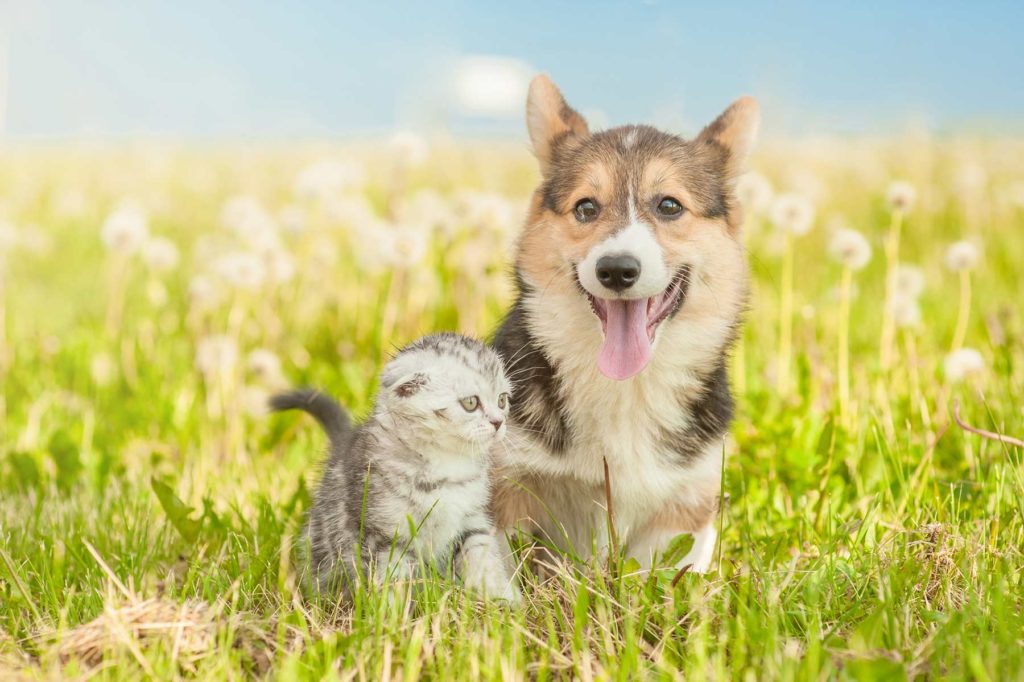Help Your Critters Beat the Heat

If you’re in the PNW, you’re likely still in shock over those 100+ degree days in late June. We aren’t built for those here! As humans, we can take a number of steps to increase our comfort on hot days, but let’s be sure to remember our furry friends. Cats and dogs (and bunnies too) can overheat quickly, and when that happens, things can go downhill faster than you realize.
Most pet owners realize that keeping pets in hot cars can kill them…but not many realize just how quickly the effects of heatstroke can set in for a dog or cat. Heatstroke is a condition animals begin to suffer gradually, but it accelerates quickly; it’s easy for early signs of heatstroke to go unrecognized, and for the pet to be in an emergency situation within mere minutes.
On warm days, a vehicle acts like an oven. It holds the heat inside, and that heat becomes very intense even on days that don’t seem too warm. On an 85-degree day, for example, even with the windows open, the temperature inside a car can climb to 102 degrees in 10 minutes, and to 120 degrees in 30 minutes. Because a dog’s normal body temperature is 101-102.5 degrees Fahrenheit, he can withstand a body temperature of 107-108 degrees for only a very short time before suffering irreparable brain damage…or death. So, running into the store for “just one thing” can lead to disaster.
The typical signs of heatstroke are:
– Panting
– High body temperature
– Dehydration
– Red mouth/eye membranes
– Rapid, irregular heart rate
– Diarrhea
– Weakness, looking dazed
– Coma
If your pet begins exhibiting any of these signs, contact your veterinarian immediately or proceed to an urgent care or emergency clinic.
According to Washington state law (RCW 16.52.340), it is against the law for anyone to “leave or confine any animal in an unattended motor vehicle or enclosed space”. A person can be charged with animal cruelty in the first degree or second degree for doing so because “the animal could be harmed or killed by exposure to excessive heat, cold, lack of ventilation, or lack of necessary water.”
Also, use caution during warm weather months when leaving animals outside in yards or on porches. Never leave them outside extended periods of time. Ensure appropriate shade and water are always available. Keep close supervision on your pet when outdoors on hot, humid, sunny summer days. If you see an animal left on a porch or in a yard with no access to shelter, or with inadequate shelter, contact your city or county animal control department immediately.
Cooling pads, kiddie pools, frozen treats, and lots of shade and cool grass feel good for everyone during these hot months. Make staying cool a family affair, and find all of the good spots in your yard to soak in the summer, without melting in the heat.
With summer (and the reopening of the world thanks to the COVID-19 vaccine) comes festivals. And with festivals, fun follows. But, these events aren’t always as fun for the furry members of the family. Arts festivals, food festivals, summer fireworks displays, and other crowded outdoor events are no places for dogs. Extremely hot weather, paired with immense crowds of people and strange noises and scents, heightens the stress level for many animals; the repetitive, exploding sound of fireworks is enough to make even the calmest animal frantic and sometimes aggressive. Your pet’s body is closer to the asphalt and can heat up much more quickly. The hot pavement can also burn unprotected, sensitive paw pads.
What is your favorite summer activity to do with your pet? How do you keep cool?
